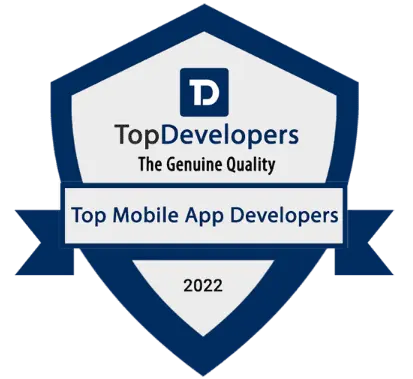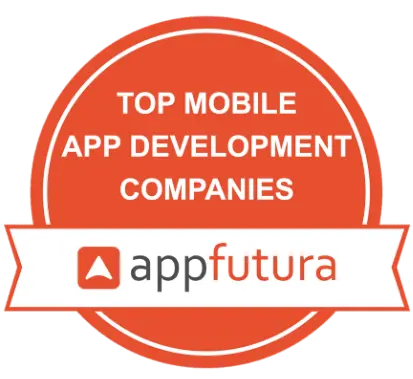The digital landscape of social media platforms is ever-changing, and if you are even one step behind on current trends, then you may miss innovative ways to engage with current users. One of the largest shifts in the unusual ways of meeting and networking is the new rise of audio-first networking, specifically, brought to you by the app Clubhouse.
Clubhouse was the first app to utilize live audio-based conversations in which users could join virtual rooms to listen to discussions or share their thoughts in real time. This different online engagement method gained millions of users across the globe and changed how we engage with each other. By 2025, Clubhouse saw over 10 million weekly active users, and the global market for voice chat apps is expected to reach over $7 billion by 2025. These statistics indicate that audio-first, or audio-driven social media apps, will not take long to become mainstream.
Given the rapid growth of Clubhouse, it is easy to understand why entrepreneurs are investigating how to build an app like Clubhouse. Startups and enterprises alike see audio networking as the latest, not-so-brief trend, which is something that can be leveraged for a long time in order to connect and build engaged communities.
In this article, you will learn what makes Clubhouse unique, how to create an app like Clubhouse, features, the tech stacks, how much it costs to build an app like Clubhouse, the mechanics of the business model, and to see the top Clubhouse alternatives that are gaining attention in 2025. If you are looking for a custom mobile app development partner, The NineHertz is the leading social media app development company.
What is the Clubhouse app?
The Clubhouse app is a voice-centric social media platform that lets users join audio chat rooms and engage in real-time conversations with other users. For example, similarity, while applications usually utilize text, images, and video, Clubhouse is based on live audio as its principal means of interaction. Clubhouse takes an approach that combines several different media forms; you can think of it as a mix of a pod cast, a conference call, and a live talk show, all at the same time.
Launched in 2020, the app was built by Paul Davison and Rohan Seth and began as an invitation-only platform, but also had a sense of exclusivity which created early buzz and rapid adoption of the service. Early adopters included celebrities, tech entrepreneurs, and industry leaders who used the service to host talks, interviews, and networking events. By the mid-point of 2021, Clubhouse has more than 10 million downloads, suggesting that audio-first networking applications are likely not a fad.
Key Features of the Clubhouse App
- Audio Rooms: Users can create public or private rooms to host live discussions.
- Moderation Tools: Room creators manage speakers and listeners.
- Clubs/Communities: Groups centered around shared interests.
- Calendar Integration: Scheduling for upcoming conversations.
- Interactive Participation: Users “raise their hands” to speak.
These features have transformed the way communities engage online, thus, making conversations more dynamic and personal than text-based platforms.
Why is Clubhouse Unique?
Essentially, Clubhouse redefined what a social media app could be. Instead of scrolling for unending text and images, it enabled people to reach each other as a voice and have spontaneous, authentic experiences touted as “the Ultimate Social Experience,” in reference to using human voice. Further, it helped by exclusive membership, where you needed an invite to join and thus create buzz and extra demand. For many, a chance to use something like Clubhouse represented a chance to join live discussions about topics with people that they may never have the chance to meet.
The Business Perspective
From a business perspective, Clubhouse established that there is a place in the digital space for voice chat apps to thrive. Other companies were smart to hop on the phenomenon created by Clubhouse and create their own spin on this idea in order to tap into similar revenue streams and create audio networking permanently as a social media space for the future.
Among entrepreneurs and startups, understanding the Clubhouse model is most important. The Clubhouse model demonstrates that focusing on a niche along the lines of audio conversations can disrupt what is otherwise a very saturated app development space. Companies or founders who are trying to create an app similar to clubhouse can expand their knowledge by unpacking where Clubhouse has been and how they got there, in order to develop a plan that can be sustained for the type of evolution that users might expect today.
How to Create an App Like Clubhouse?
Building a voice-first social media app is not as easy as simply replicating the features that other voice-first apps have such as Clubhouse. Building the app requires a lot of thoughtful planning, some technical savvy, and business acumen. For a startup or enterprise to build an app like Clubhouse successfully, they need to have an app development process they can follow.
1. Conduct Market Research and Competitor Analysis
Before you invest time and money into developing an app, think carefully about the demand for a voice chat app in your market. To do this, examine competing apps, such as Twitter Spaces, Discord, or Spotify Greenroom and assess where competitors may be lacking. Understanding where competitors fail or where there are gaps in service makes it easier to create an app like Clubhouse that is more than a copycat, rather finding the right launch pad for growth.
Tip: Thorough research and niche definition are essential to make an app like Clubhouse that stands out.
2. Define Your Target Audience and Niche
When Clubhouse began, they branded themselves as a networking tool mostly for professionals, now you can find Clubhouse events popped up across broader communities. Will your platform be more focused on professional events, casual conversations, education, or entertainment? Choosing a clear niche and defining your target users will allow you to position your app as you launch into the crowded social audio app and social medial app space.
3. Plan the Feature Set
Write a list of your must-haves and nice to haves. Must-haves would be user onboarding, profile management, voice/audio rooms, notifications etc. Nice to haves could be AI powered recommendations, live event scheduling, or gaining access to monetization features. Looking thoughtfully at your features early will be useful for estimating budget/cost to build an app like Clubhouse.
4. Choose the Development Approach
You can create an app like Clubhouse in a variety of ways:
- Native Development: Best for performance and user experience. (Swift for iOS, Kotlin for Android)
- Cross-Platform Development: Faster and more efficient (Flutter, React Native).
- MVP Development: Just build a minimum viable product (MVP with core features and then expand.
Depending on your budget, timeline and plans for scalability, you may choose to develop your app using one of those three methods.
5. Select the Right Tech Stack
Choosing the right technologies for the front-end, back-end and audio streaming is critical. There are many front-end technologies available like React Native or Flutter and back-end technologies like Node.js or Python plus audio streaming technologies like WebRTC or Agora.io for real-time audio streaming to ensure your app like Clubhouse is viable in terms of security, scalability, and reliability.
6. Partner with an Experienced Development Company
To build the next Clubhouse app, you will need the expertise in voice chat application integrations, cloud hosting for audio streaming, and understanding real-time communication protocols. Partner with a reputable app development company that specializes in audio streaming app like Clubhouse, which will allow you faster time to market, better quality and long-term after-care.
Pro Tip: Partnering with an experienced app development company like The NineHertz can reduce risks.
7. Prioritize UI/UX Design
The key to Clubhouse’s success was its simply elegant design. Make sure your audio social media app focuses on simplicity with its design, prototyping, navigation and interaction so that your users won’t be put off by poor UI/UX.
8. Integrate Monetization Models Early
When creating an app similar to Clubhouse, you need to think about how it will make money. Funds can come from subscriptions or ticketed events, in-app purchases or shopping, brand partnerships, and so on. Knowing how you plan to generate revenue will help your organization grow sustainably once the app is launched.
9. Test, Launch, and Scale
Before you launch the app formally, you will need to extensively test out the app to fix any bugs or offline performance issues. Alternatively, you can release a ‘mid-launch’ and choose a select amount of users (your early adopters) to ‘test’ out the beta version through word-of-mouth. Once you gather user feedback from beta users, you can scale, by adding advanced features and selling to different markets.
Features to Develop a Social Media App Like Clubhouse
Planning is everything. Once you decide to create an app like Clubhouse (or copy for that matter), the success of this app will be defined by the actual features you include. Clubhouse just did not happen because of timing. It happened because of the user experience with innovative features and simplicity. If you are looking at building an app similar to Clubhouse, the following are must-have features an app like Clubhouse can include as well as some advanced features.
Here are some of the key features that are important to make a social media app like Clubhouse:
1. Simple Onboarding & Profile Creation
The first impression is powerful. Users need the option to sign up with an email, phone number, or social media logins. Creating a profile will help personalize your social media platform by setting up a bio, photo, interests, and other profile features/features.
Tip: Offer quick sign-up options via Google or Apple to reduce drop-offs.
2. Audio Rooms (Public & Private)
Clearly, the live audio rooms are the most important feature. Users will need to join public rooms that are talking about trending topics or create private rooms for layered and closed conversations with only their friends (other users with their app) forming a ‘lounge’ of sorts – but keep in mind – moderators (including roles such as host) like the speaker and listener will clearly be a feature.
Note: Include a “raise hand” feature to let listeners participate without disrupting ongoing discussions.
3. Search & Content Discovery
Users should easily find rooms, speakers, or clubs. A recommendation engine using user interests could enhance user engagement.
Tip: Add trending or “recommended for you” sections to keep users exploring longer.
4. Notifications & Reminders
Users need push notifications to remind them of upcoming events, room invitations, and speaker updates.
Note: Give users control over notification preferences to avoid fatigue.
5. Calendar & Event Scheduling
A host should be able to schedule the next conversations and a user should have the option to set a reminder. This will add predictability and consistency to your social media app.
6. Moderation Tools
Security and quality of content are paramount. If a user disrupts a room, the creator of the room should have the ability to mute or remove and report the user.
Tip: AI-driven moderation can help detect abusive content in real time.
7. Cross-Platform Support
In 2025, users expect the same experience in an app whether it is Android, iOS, tablets, or even web applications. Users expect your app to function the same across all platforms for a much broader reach.
Besides the essential features, some of these advanced features can also be added to your app to make it more robust and futuristic:
1. Multi-Language Support
If global reach is your ambition, your app needs localization. Users in other countries will love to see multiple languages in the app because they feel included.
2. AI-Powered Recommendations
Artificial Intelligence can help curate room suggestions for users to consider attending, suggest speakers, and filter away content that is irrelevant to a user.
Note: AI not only improves user engagement but also helps advertisers target better.
3. In-App Monetization
When you develop an app like Clubhouse, creating revenue streams is critical. Here are a few options to consider:
- A subscription plan for premium users
- Paid access to exclusive rooms, and
- In-app tipping for creators.
Tip: Introduce microtransactions early, so users get used to the model from the start.
4. Analytics Dashboard for Hosts
If you tell creators things like room attendance, engagement levels, and follower growth, it can encourage creators to engage and host more events.
5. Integration with Other Platforms
Letting users share live room URL links on Twitter, LinkedIn, or Instagram can drive organic traffic to your app.
6. Voice Recording & Playback
Certain conversations are moronic to lose out on. Especially if you provide options to record and replay, you’ll give more long-term value to conversations.
Note: Always include consent prompts before recording to ensure user trust.
Why Do Features Matter?
Every feature that you add has a direct cost to developing an app like Clubhouse as well as giving the app more value to users. It is important to have a balance of features for casual users and professional communities to determine what is essential and what is upper level.
When all is said, done, and launched, if you can balance a great user interface, real-time audio performance, and monetization options, you will have an app like Clubhouse that is both competitive and unique in an ever-growing voice chat app market.
Clubhouse Like App Development Tech Stack
The first step for developing a voice chat app, like Clubhouse is that you need to make smart choices about the technology stack that you choose. A well-structured technology stack that is well-structured provides scalability, security, and enhances the ease of use experience for the app. Since a real-time audio communication app is highly dependent on low latency and high reliability, it is important to carefully consider what suite or stack of technologies you choose.
| Component | Technologies / Tools | Purpose / Benefits |
|---|---|---|
| Frontend (UI/UX) | React Native, Flutter, Swift (iOS), Kotlin (Android) | Cross-platform or native app development for smooth UI/UX |
| Backend (Server-Side) | Node.js, Python (Django/Flask), Ruby on Rails | Manages user requests, room creation, and scalability |
| Database | MongoDB, PostgreSQL, MySQL | Stores user data, chat history, and analytics |
| Audio Streaming | WebRTC, Agora.io, Twilio | Real-time audio communication with low latency |
| Cloud Hosting | AWS, Google Cloud, Microsoft Azure | Scalable infrastructure for high traffic handling |
| Security & Privacy | SSL, OAuth 2.0, JWT, End-to-End Encryption | Data protection, user privacy, and secure logins |
| Notifications & Analytics | Firebase, OneSignal | Push notifications, engagement tracking, and crash reports |
| Search Engine | ElasticSearch | Fast and accurate in-app search functionality |
| Payment Gateway | Stripe, PayPal | Enables in-app purchases and monetization |
| Project Management & CI/CD | GitHub, GitLab, Jenkins, Docker | Version control, deployment automation, app updates |
Frontend (Client-Side Development)
The frontend is what is shown to a user of your social media app. It needs to be smoothly functioning and quickly responding to their interactions and possible automatic updates in real-time.
- React Native / Flutter: Ideal for cross-platform development.
- Swift (iOS) & Kotlin (Android): Best suited for native development: the highest level of performance.
Tip: If the budget is tight, start with Flutter or React Native to launch on multiple platforms quickly.
Backend (Server-Side Development)
The backend is responsible for user authentication, creating rooms, and controlling the audio streams.
- Node.js: Great performance and lightweight for real-time applications.
- Python (Django/Flask): Flexible and easy to scale.
- Ruby on Rails: A Great framework for faster development.
Note: For apps handling thousands of concurrent audio streams, Node.js with WebSockets is highly recommended.
Database
For the user profiles, chat histories, and analytics, table storage and retrieval speeds are important.
- MongoDB: A NoSQL database that is scalable.
- PostgreSQL / MySQL: Reliable relational databases for structured data.
Audio Streaming & Communication Protocols
The first, most important building block of your app when doing something like Clubhouse, and you are delivering quality audio is:
- WebRTC: An open-source standard for real-time audio/video.
- Agora.io / Twilio: Third-party APIs with higher-quality voice communication capabilities.
Tip: Using APIs like Agora can reduce development time, though they add to long-term costs.
Cloud Hosting & Storage
Since your app will need to scale, two hosting providers that can meet the demands of live audio traffic are:
- AWS (Amazon Web Services): Provides you the ability to scale the application and has best-in-class security features as well.
- Google Cloud / Microsoft Azure: Good alternatives with global access.
Security & Privacy Tools
One thing that is non-negotiable for your social media app is security.
- SSL encryption: secure data while being transferred.
- OAuth 2.0 & JWT: secure user authentication.
- End-to-end encryption: builds trust during private conversations.
Note: Always prioritize GDPR and data privacy compliance if targeting international markets.
Additional Tools
- Firebase: push notifications and analytics.
- ElasticSearch: fast and easy search for users.
- Stripe / PayPal integration: in-app fees and payments.
The tech stack to develop a Clubhouse-like app should be based on your objectives, budget, and sizing. Startups may want to use cross-platform technologies or third-party APIs, at the same time, enterprise-level businesses may opt for a custom-built, native option to retain as much control as possible.
Cost to Develop an App Like Clubhouse
The cost of building a Clubhouse-type app depends on a number of factors that include how many features it has, complexity of the application, where the app development team is located, and tech stack. Typically, the average cost for development ranges between $45,000 to $300,000+, depending upon whether you are building an MVP or a full-fledged social media-based app.
1. Factors Affecting the Cost of Clubhouse Like App Development
| Factors | Impact on Cost |
|---|---|
| App Features | Basic chat vs. advanced features like live rooms, recording, and moderation increase cost |
| Platform Choice | iOS, Android, or cross-platform development affects cost and timeline |
| UI/UX Design | Custom animations and unique designs raise costs compared to simple layouts |
| Backend Infrastructure | Cloud hosting, scalability, and audio streaming tech stack (Agora/WebRTC) impact pricing |
| Team Location | Hiring app developers in the US/UK is more expensive than outsourcing to Asia/Eastern Europe |
| Third-Party Integrations | Payments, notifications, and analytics add to the overall cost |
| Security Compliance | End-to-end encryption and GDPR compliance require extra investment |
2. Approximate Development Cost by Region
| Region | Hourly Rate (Avg.) | Estimated Cost (MVP) | Estimated Cost (Full App) |
|---|---|---|---|
| USA / Canada | $100 – $150/hr | $100,000 – $150,000 | $250,000 – $350,000 |
| Western Europe | $80 – $120/hr | $80,000 – $130,000 | $200,000 – $300,000 |
| Eastern Europe | $40 – $70/hr | $50,000 – $90,000 | $120,000 – $200,000 |
| Asia (India, Vietnam) | $25 – $50/hr | $40,000 – $70,000 | $100,000 – $150,000 |
3. Stage-Wise Cost Breakdown
| Development Stage | Tasks Included | Estimated Cost |
|---|---|---|
| Discovery & Research | Market research, requirement analysis, competitor study | $5,000 – $10,000 |
| UI/UX Design | Wireframes, prototyping, design assets | $8,000 – $15,000 |
| Frontend Development | Mobile interface development (iOS/Android or cross-platform) | $15,000 – $40,000 |
| Backend Development | Server, APIs, database, and real-time audio functionality | $20,000 – $70,000 |
| Audio Streaming Setup | Integration of Agora, WebRTC, or Twilio | $10,000 – $30,000 |
| Testing & QA | Manual + automated testing, bug fixes | $5,000 – $15,000 |
| Deployment & Launch | App Store/Play Store publishing, CI/CD setup | $3,000 – $7,000 |
| Annual Maintenance | Regular updates, feature upgrades, and server costs | $10,000 – $30,000 |
Tip: for start-ups, building an MVP version of your voice chat app focusing on the core elements of just real-time audio, biography profiles and room creation helps keep the cost to build a social media app like Clubhouse down while validating your concept before you scale.
Clubhouse Like App Business Model
Clubhouse uses a creator-driven, community-driven business model to connect users through voice conversations in real-time. Clubhouse differs from conventional social media because it leans toward authentic audio-based interactions instead of text or video.
To monetize an app like Clubhouse, businesses will need sustainable revenue stream streams that do not take away from the free-flowing and engaging user experience.
1. How Does Clubhouse Make Money?
Originally, Clubhouse was free and was an invite-only app; then it introduced monetization strategies. Nowadays, apps like Clubhouse capitalize on monetization through several means:
Creator Subscriptions: Users pay subscriptions to access exclusive rooms or premium content created by their favorite creators.
- Ticketed Events: Users can host webinars, concerts, or private, closed sessions and charge entry fees.
- In-App Purchases: Users can purchase virtual gifts, tokens, or coins that they send to creators.
- Donation & Tip: Fans can send directly to speakers or influencers.
- Brand Partnerships & Sponsorships: Companies can sponsor rooms or events targeting niche communities.
- Advertising (Future Scope): Native ads could possibly be integrated very easily without compromising the current audio experience.
2. Clubhouse-Like App Revenue Model
| Revenue Stream | Description | Revenue Potential |
|---|---|---|
| Subscriptions | Monthly/annual fees for premium content & features | High (scales with users) |
| Ticketed Events | Pay-per-event access for workshops, live shows, and training sessions | Medium to High |
| In-App Purchases | Coins, gifts, and tokens are used to support creators | Medium |
| Tipping / Donations | Direct payments from users to creators | Medium |
| Sponsorships | Brands sponsor rooms/events for targeted promotions | High (brand-driven) |
| Advertisements | Audio ads, banners, or promoted rooms (future scope) | High, but depends on user tolerance |
Pro Tip: For startups planning to develop an app like Clubhouse, it’s best to start with creator tipping & ticketed events, as they encourage creator participation and boost early adoption without making the platform overly commercial.
You might also like to read below relevant guides:
How to build an app like TikTok?
How to Build an app like Snapchat?
Top 5 Clubhouse Alternatives
While Clubhouse was the first voice chat app, there were many other applications that have been launched that have also found success. If you want to create an app like Clubhouse, you will want to study their top competitors to learn about features that are unique to them, their monetization models, and their audience engagement strategies.
1. Twitter Spaces
Twitter integrated Twitter Spaces into its existing platform, so that existing users can host a live audio conversation on Twitter. This played to Twitter’s advantage because it already had a massive user base, which allowed Twitter Spaces to reach millions of people at the same time.
| Pros | Cons |
| Integrated into Twitter’s existing ecosystem (no separate app required) | Limited discoverability compared to standalone platforms |
| Large audience base and easy follower migration | Features like ticketed events are still evolving |
| Easy to join and host live conversations | Competes with other Twitter features, reducing focus on Spaces |
2. Spotify Greenroom (Now Spotify Live)
Spotify was originally launched as Greenroom and is now Spotify Live, which is designed for conversations in audio about music, podcasts, and pop culture. Spotify Live is integrated into the larger Spotify ecosystem.
| Pros | Cons |
| Backed by Spotify’s strong brand and creator ecosystem | Limited to entertainment-focused discussions |
| Monetization options through podcast integration | Lower adoption compared to Clubhouse & Twitter Spaces |
| Great for creators already on Spotify | Niche appeal rather than mass-market use |
3. Discord Stage Channels
Discord started as a social media app for gamers but enhanced its functionality by adding Stage Channels to let users create structured audio discussions. Due to this, Discord is a powerful alternative because each Discord community is built in already.
| Pros | Cons |
| Strong community-driven model | More complex for non-gamers |
| Supports video, text, and audio, not just voice | Requires server setup, not as plug-and-play as Clubhouse |
| High-quality audio with moderation tools | Discoverability outside gaming communities is low |
4. Telegram Voice Chats
Telegram has added Voice Chats to its channels and groups, allowing real-time communication with many people. Telegram allows communication through text, audio, and files.
| Pros | Cons |
| End-to-end encryption ensures privacy | Not marketed as a standalone voice chat app |
| Easy integration with existing groups | Less focus on entertainment and influencer-driven features |
| Scalable for large communities | It can feel like an add-on, not a core product |
5. Reddit Talk
Reddit launched Reddit Talk, a feature that allows each subreddit community to host live audio sessions. Community members can use their voice to have real-time interaction with one of the largest community-driven online spaces.
| Pros | Cons |
| Built on Reddit’s strong community base | Still in beta, with limited features |
| Great for niche discussions and community engagement | Smaller reach compared to Twitter Spaces or Clubhouse |
| Moderation features to keep conversations relevant | Monetization options are limited |
Quick Comparison – Clubhouse vs Alternatives
| Platform | Best For | Unique Edge |
| Clubhouse | Audio-first networking | Exclusivity & simplicity |
| Twitter Space | Broad audience engagement | Built-in Twitter user base |
| Spotify Live | Music & podcast communities | Deep Spotify integration |
| Discord Stage Channels | Gaming & communities | Multi-format (text, video, audio) |
| Telegram Voice Chats | Privacy-focused groups | Secure & scalable |
| Reddit Talk | Niche communities | Community-driven discussions |
Note: If you are planning to develop an app like Clubhouse, study these alternatives closely. Borrow their strengths (like discoverability from Twitter, monetization from Spotify, and community tools from Discord), while addressing their weaknesses (like discoverability, niche focus, or limited features).
Conclusion on Build an App Like Clubhouse
The popularity of voice chat apps like Clubhouse has highlighted that many people prefer unfiltered, real-time conversations as opposed to chatting over text or somehow video. The potential to develop an app similar to Clubhouse is greater than ever, with over 10 million weekly users at its height and a market forecast that exceeds $7 billion by the end of 2025.
To build a social media application like Clubhouse, you will want to have a strong tech-stack,an identified business model, and focus on user engagement. Every aspect of the app, from features to monetization, will play a critical role in the platform’s success.
Are you an entrepreneur or a business leader with plans to create an app like Clubhouse? Now is the perfect time to start! Working with an experienced app development company like The NineHertz, you can be confident that your product will have plenty of features but also be scalable, secure, and ready for the advances of technology.
Frequently Asked Questions
Let us discuss some of the commonly asked questions related to developing social media app like Clubhouse:
1. How much does it cost to build an app like Clubhouse?
The cost to create an app like Clubhouse will range from $45,000 to $300,000+, depending on the scope, platform (iOS/Android), and location of the team. If you are developing a minimum viable product (MVP), the pricing is lower; however, as you create a full-featured app, you can expect to invest more.
2. How long does it take to develop a Clubhouse-like app?
Generally, it takes four to nine months to build an app like Clubhouse for your audience. The time period is reliant on how elaborate you want the design to be, what features you want, and if you want to build a native or cross-platform app.
3. What features are essential in a Clubhouse-like app?
Core features are user accounts, creation of rooms, live audio streaming, moderation options, notifications, and monetization opportunities (ticketed rooms, tips).
4. Can I monetize a Clubhouse-like app?
Yes. Monetization can occur through subscription services, ticketed rooms, in-app purchases, sponsorships, and advertising. Working with creator tips and ticketed rooms is a great way to encourage engagement.
5. Why should I choose NineHertz for developing a Clubhouse-like app?
The NineHertz has experience with app development, scalable technologies, UI/UX, and securing compliance. We help businesses quickly and affordably build an impactful social media application.
Great Together!
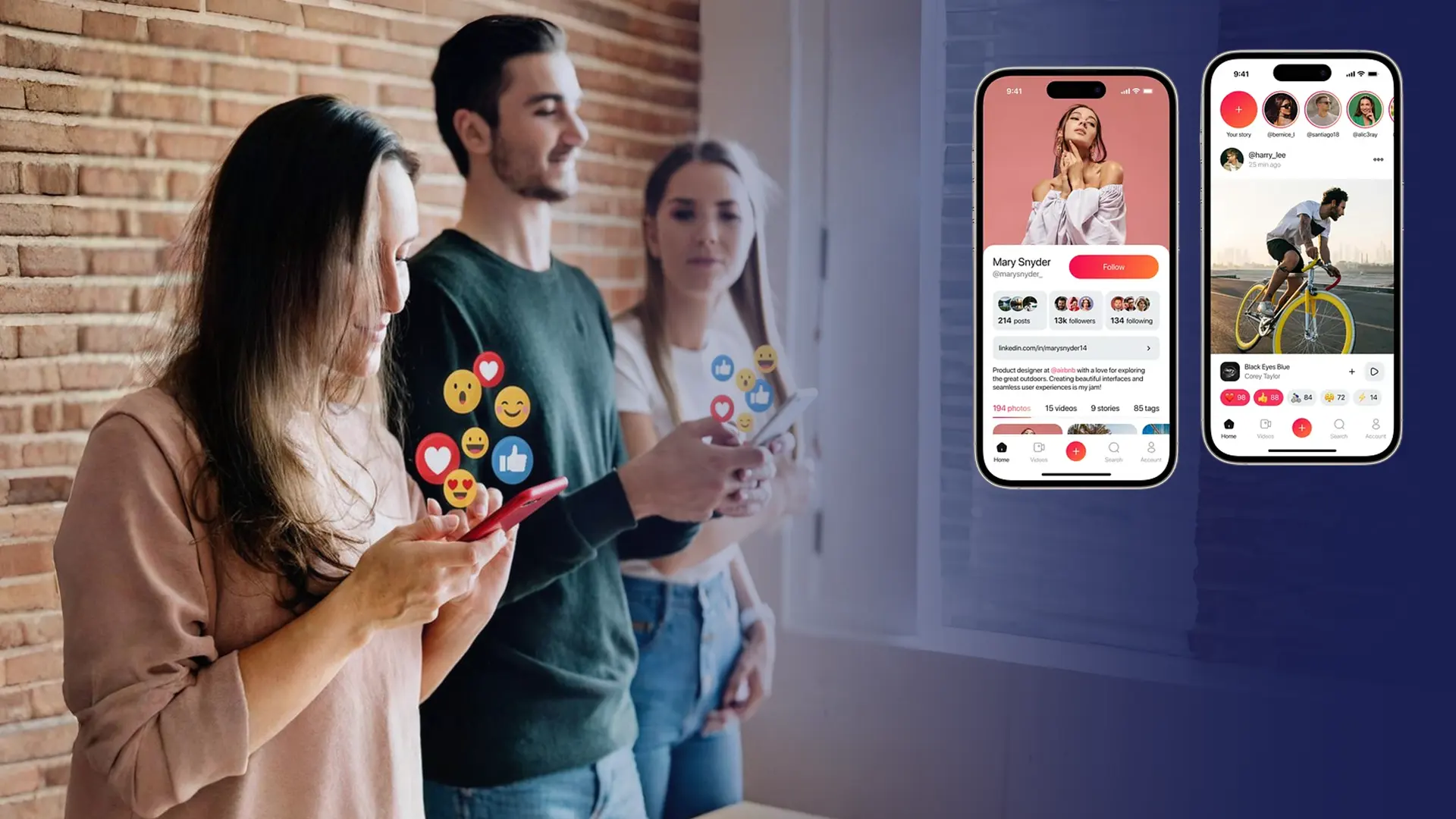
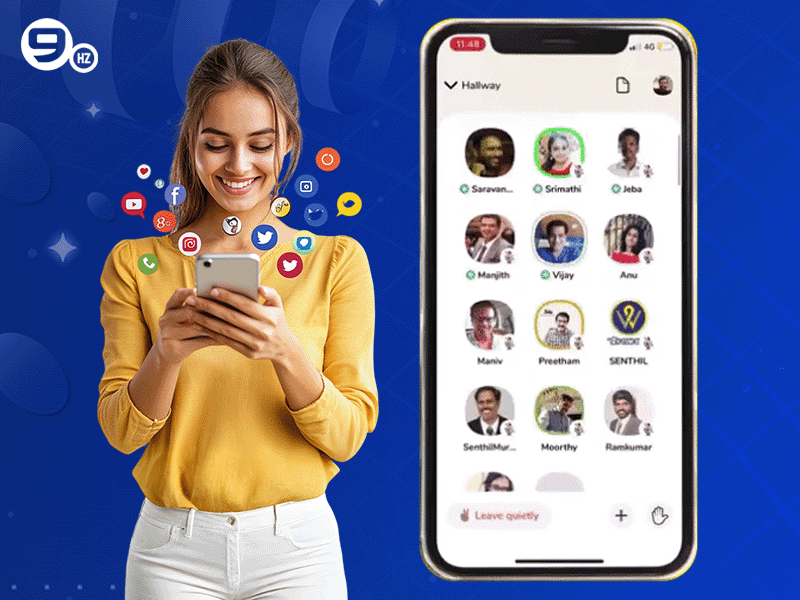
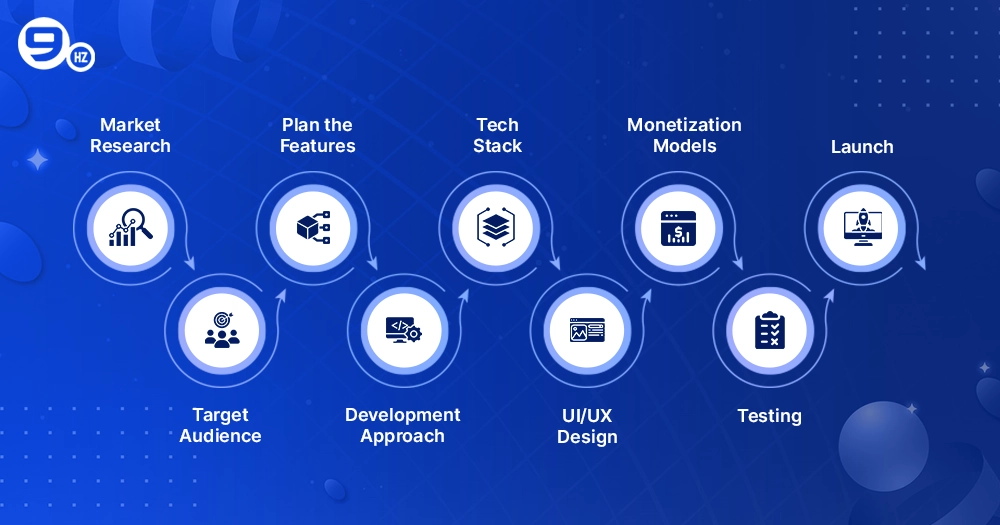


![How to Create an App like Careem? [Cost in 2025]](https://theninehertz.com/wp-content/uploads/2024/09/how-to-create-an-app-like-careem.webp)

![How to Create an AI-Powered Wellness App? [2025 Guide]](https://theninehertz.com/wp-content/uploads/2025/11/how-to-create-an-ai-powered-wellness-app.webp)
